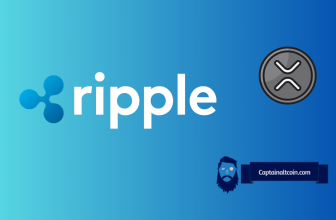
Photo by Nick Chong on Unsplash
Bitcoin. It’s easy to see why the financial phenomenon of the 21st century dominates news headlines. It’s part of our daily language now; the first cryptocurrency to challenge the fiat currency’s centuries-old grip on the global economy.
Yet amid all the fuss, we tend to overlook the impact that altcoins — Bitcoin’s crypto alternatives — have made. Following hot on BTC’s heels, they provide important competition to the original crypto, often improving on its flaws in the process.
Here’s a brief history of how altcoins came into being, and what the near future might hold in store for them.
What you'll learn 👉
A quick definition
First, let’s clarify just what an altcoin is exactly, just in case you’re new to this topic. Quite simply, ‘alt’ stands for ‘alternative’, as that’s what these digital coins are: alternatives to Bitcoin.
These are virtual currencies that have built on Bitcoin’s success by altering the rules to appeal to different crypto users, although they operate on the same basis: using blockchain to record permanent records of each transaction.
Where it all started
The first altcoin ever launched was Namecoin (NMC) back in 2011. It used the same code as Bitcoin, the same proof-of-work algorithm and was even limited to the same number of coins: 21 million. Yet there was one key difference: NMC wanted to be more than just a cryptocurrency and allowed users to register and mine using their own .bit domains, making them less visible in the process.
As the end of 2013 neared, NMC hit a glorious high of $15.41 per coin, or 0.03 BTC, and users started to see it as a credible challenger to the original’s crown, but there were several other contenders on the horizon. Too many, in fact. The market became saturated and NMC started to lose its appeal. As rivals like Litecoin started to overtake it, it descended to the undignified status of ‘sh*tcoin’ – a term given to hundreds of cryptos who sprang up with little to no value.
The stampede of new coins did conjure up a few gems, however, and these form the backbone of the alt market today. Litecoin (LTC) is one of those. Created by former Google employee Charlie Lee, the coin really started to take off when it jumped 100% in value in one day in November 2013. While very similar to BTC, it aimed to process a new block of coins every 2.5 minutes compared to the original’s 10, allowing for much quicker transactions. However, its script algorithm also makes LTC mining more complicated and expensive than BTC, which some argue is the main reason why it will never emulate its rival.
It wasn’t just Litecoin that was making waves, though. Ripple actually surpassed Bitcoin’s performance in 2014 and then again in 2017, while Stellar Lumens had the best overall return over the three-year period starting in 2015. There was even a foray into the world of memes after Reddit phenomenon ‘Doge’ had its own special altcoin named in its honour – and the coin is still going strong today.
Altcoins were now here to stay, reflecting a huge demand for cryptocurrency that didn’t just lie within the realms of Bitcoin.
Expansion into the mainstream
By 2016, more than 600 altcoins were in existence. The sheer number of them meant that it was impossible for the average user to keep track of them all, so related industries appeared, including official crypto guides as well as influencers dedicating their channels to the continual ups and downs of the altcoins of the moment.
That year was the real starting point for altcoins in mainstream thinking and will probably prove to be the best year ever to invest in the market: a $100 investment in each of the top 10 coins at the start of the year would have been worth an incredible $312,326 just two years later – and much, much more at the time of writing.
Ethereum, for example, went up 2000% in 2017, and many analysts saw it as a contender for BTC’s crown. Wherever it went, Ethereum followed – internet stores began to accept crypto as payment methods, crypto-friendly casinos started to welcome deposits from them, and exchanges allowed users to trade them – all roughly around the same time.
The meteoric 2017 rise of Bitcoin set the tone for unprecedent expansion in the Altcoin market, too, an increase of over $800 billion over the course of the year. A bad 2018 threw a spanner in the works across the crypto world, but altcoins have since dusted themselves off to return to a bullish 2020 and start of 2021. As the world economy struggled in the wake of the Covid crisis, the likes of ETH and Ripple hit new heights to mark them out as part of a global crypto future.
The short-term future of Alts
With the Altcoin market riding on the wave of Bitcoin’s success, the crypto market is currently booming, boasting a market cap of over $1 trillion. Yet given the market’s volatility, the success of each coin will vary wildly over the next few years and, as such, predicting the future performance of an altcoin is extremely complicated.
That said, there are three important things to look out for that might give a clue to future performance:
- 1 – How they’re verified (consensus method)
The coins that can strike the right balance between speed and safety when validating transactions will do well. The Proof-of-Work method (POW) is energy- and time-consuming but safer than the Proof-of-Stake (POS), which is quicker. Cosmos (ATOM) is a good example of having an effective consensus method and has done well recently.
- 2 – How you can spend them (retailer acceptance)
It’s no good holding an altcoin if you can’t buy anything with it. While altcoins aren’t as widespread as Bitcoin, many retailers still accept them. Some aren’t designed to be exchanged for goods, however.
- 3 – How much it’s worth (market cap and trading volume)
A coin’s market cap is the total worth of all its units in circulation, while its daily volume is simply how much of it is being traded – and many traders see it as the best indicator of a coin’s future price.
While none of the above offer a crystal ball into an altcoin’s future, they do provide indications towards its future performance. Given the crypto market’s recent success, many experts are leaning towards a bullish short-term future for alts, with some even earmarking several that could outpace Bitcoin – yet we should always exercise caution when trading and remember that in the world of altcoins, anything can happen.






